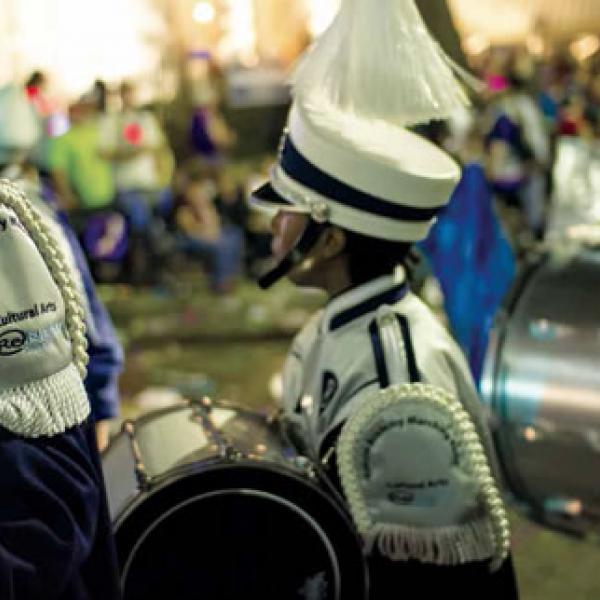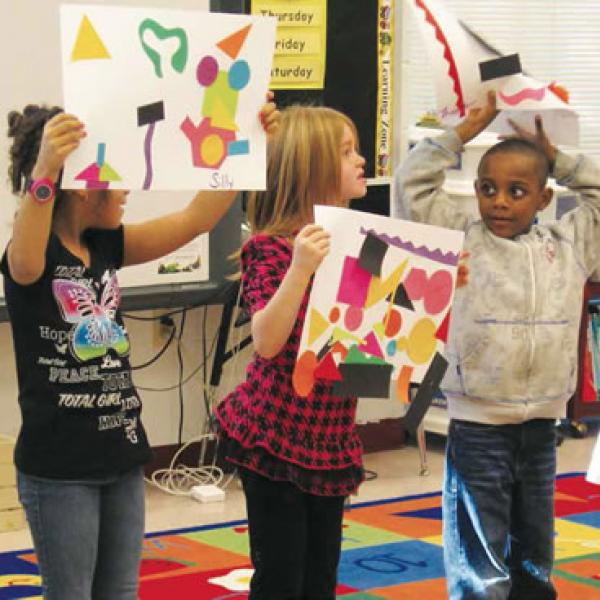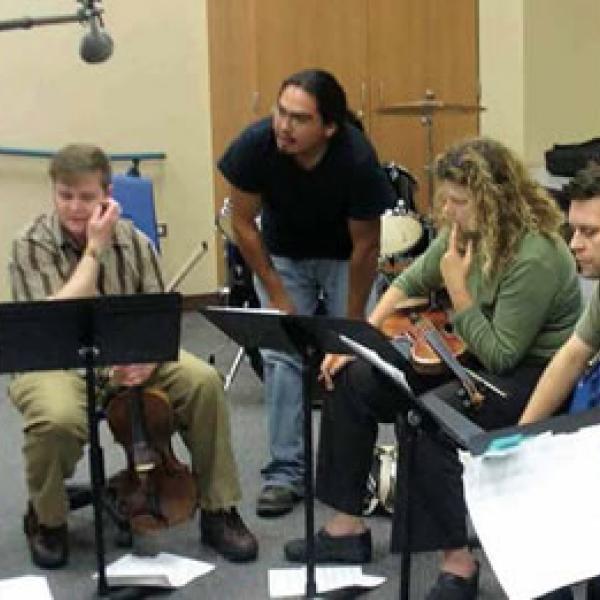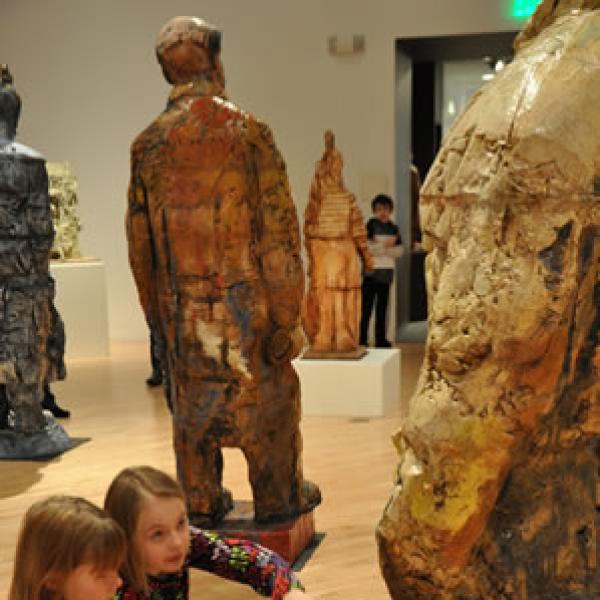Learning and Living Through the Arts

Students perform in dance production at South Carolina Governor's School for the Arts and Humanities. Photo courtesy of Emily Allen
As concern grows over the quality of education in America, more and more schools are beginning to test whether arts-integrated curriculums can be a helpful tool in fostering academic achievement. The underlying belief is that this approach creates an interdisciplinary learning environment and encourages students to make connections between multiple subjects and perspectives. For some schools, though, arts-integrated programming has been central to their existence for decades. These unique institutions immerse their students in an arts and culture-focused environment, grounding their missions in arts education.
Three such schools are the South Carolina Governor's School for the Arts and Humanities in Greenville, South Carolina, the Perpich Center for Arts Education Arts High School in Golden Valley, Minnesota, and the Waverly School of the Arts in Brooklyn, New York. Each school represents a unique approach to arts education, crafting their curriculums around their students' needs and values. Despite their differences, both schools are united through their commitment to a meaningful education in the arts and an insistence that their students pursue their passions.
A Pre-Professional Approach
Located in vibrant downtown Greenville, South Carolina, the South Carolina Governor's School for the Arts and Humanities gives high school students an exceptional opportunity: to live, breathe, and exist for their art. A public residential high school, the Governor's School offers students a focus in one of five different areas: music, creative writing, drama, dance, and the visual arts. "Govies" choose one art area to study intensely, working with faculty comprised of practicing, accomplished artists.
"I think the biggest thing that sets the Governor's School apart is our pre-professional approach," said Julie Allen, dean and vice president of arts and academics. "Our expectation is that students are preparing to enter the next level of instruction, whether that's going to a college, a conservatory, or perhaps even straight into a dance company."

A two-year program primarily intended for 11th-and 12th-graders, the curriculum is organized with academic classes in the morning and arts classes in the afternoon. This segmented approach allows students to devote equal attention to both their art area and their academics. However, the school is also uniquely interdisciplinary, honoring each art area while forming connections from one discipline to another. "We certainly have an interdisciplinary approach, but I also think that we honor the integrity of the individual disciplines as well. The way to make an interdisciplinary program work is by understanding the intrinsic value of each discipline, and how each discipline can complement each other in a really authentic way," said Allen.
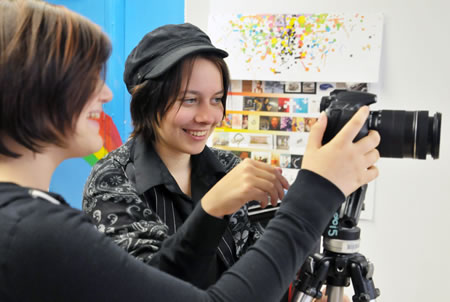
An intensive arts education is only part of the Governor's School experience, though. The Governor's School gives students the opportunity to live and work with like-minded peers, immersing themselves in a dynamic artistic community. "It is not a Southern thing for your child to go boarding school, but I think our success is very, very directly tied to the fact that this is a residential high school," said Allen. "It helps create a sense of an artistic community—a group of students and faculty and staff who embrace and appreciate what the arts do for us as individuals and what the arts do for us as a society."
A Statewide Mission
Founded as a state agency by the Minnesota legislature, the Perpich Center for Arts Education is home to a two-year arts high school that opened its doors to juniors and seniors in 1989. Though the arts school is a central part of the Perpich Center, the agency supports arts education statewide through workshops, professional development, and collaborative programs. "We want students in every part of our state, not just at our high school, to be influenced by the arts," said Dr. Pamela Paulson, senior director of policy at Perpich. "It gives the school a different flavor because we have teachers on campus visiting our library, taking tours of the arts high school, and going over to our professional development building. It's got a feeling of a much bigger operation to it."
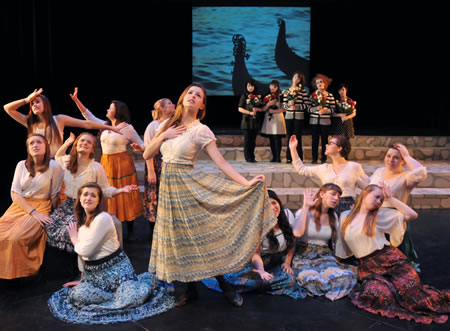
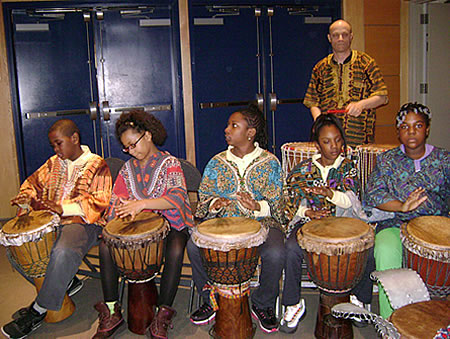
Planting the Seed
While focusing on the mastery of one art area is incredibly valuable, some schools have chosen to expose students to the entire artistic spectrum. Offering students a variety of arts experiences allows them to investigate different subjects, and discover their strengths and passions in the process.
The Waverly School of the Arts, a public elementary school located in Brooklyn, New York, demonstrates this philosophy through its arts strand program. This specialized approach immerses each grade in a different "strand" of the arts, exposing students to a variety of experiences and mediums. Grades K-3 study holidays, African dance, visual arts, and Latin dance, while grades four and five are offered a variety of subjects to choose from.
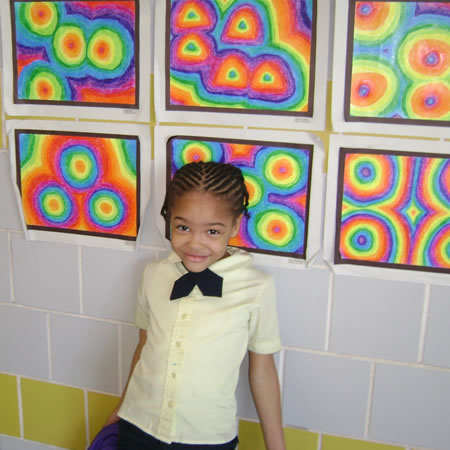
Each strand runs for eight weeks, during which the entire curriculum is immersed in the chosen art area. Classroom teachers and art teachers work together to design a curricular plan, deciding how each art area will be integrated into academic subjects. "Part of our mission is to address the whole child, and we really believe that the arts help children bring out their academics," says Beverly Logan, principal of Waverly. "We try to tie the arts into their everyday lives so they understand that the arts aren't isolated. It's a part of life." The end of each eight-week period concludes with a student performance or presentation, bringing the school and community together to celebrate students' hard work.
"One thing I love about integrated arts education is that you have some children who struggle academically, but they find success in the arts. This boosts their self-esteem and gives them the encouragement to keep trying in academics. It's another avenue kids can take, whether they're doing well academically or not," said Logan.
"I have seen the shyest child come out of his or her shell on the stage," she continued. "I have seen students who have discipline challenges funnel that energy into doing their best work, whether it's through visual arts, music, or dance. I've seen children who felt like they didn't have an artistic ability all of a sudden realize they do. It's a powerful way for kids to feel good about themselves."
Students learn that the arts are not a segregated topic; the arts connect to everything in the world around them. Waverly plants the seed for an artistic future, encouraging students to explore the arts as a natural part of the learning process, and perhaps even as a future way of life. "My students definitely leave with an understanding of what art is and what they like and what they don't like," said Logan. "Even though it's elementary [school], it gets them thinking, ‘What do you want to do when you grow up?' Many students would not have thought of the arts as an avenue otherwise."


